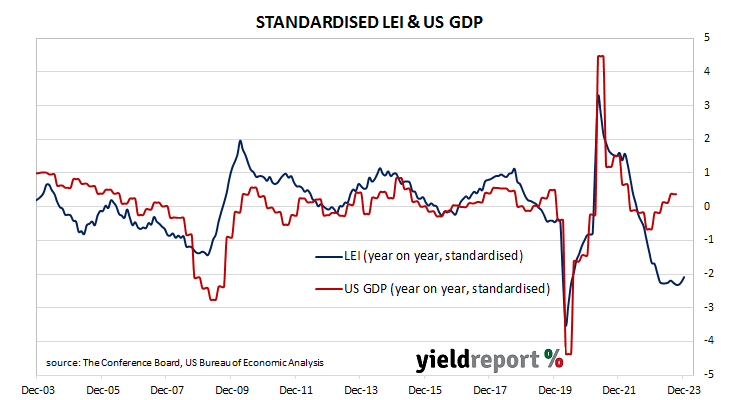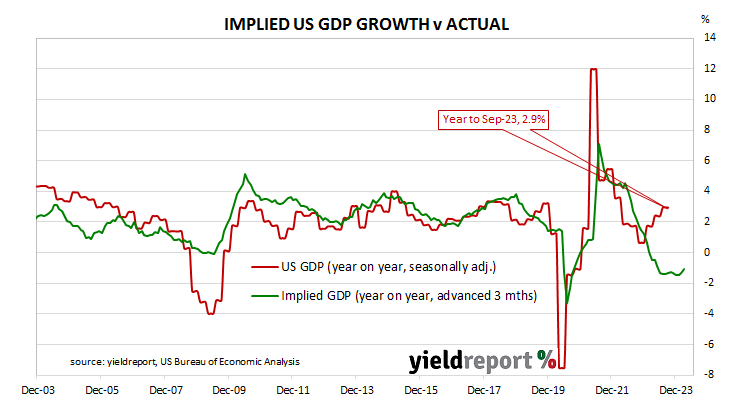Summary: Conference Board leading index down 0.1% in December, higher than expected; improvements more than offset by weak conditions in manufacturing, high interest-rate environment, low consumer confidence; US Treasury yields fall; rate-cut expectations firm; six-month, twelve-month growth rates turn upward but still signal risk of recession ahead; regression analysis implies 1.1% contraction in year to March.
The Conference Board Leading Economic Index (LEI) is a composite index composed of ten sub-indices which are thought to be sensitive to changes in the US economy. The Conference Board describes it as an index which attempts to signal growth peaks and troughs; turning points in the index have historically occurred prior to changes in aggregate economic activity. Readings from March and April of 2020 signalled “a deep US recession” while subsequent readings indicated the US economy would recover rapidly. More recent readings have implied US GDP growth rates will turn negative sometime in the second half of 2023 or the first half of 2024.
The latest reading of the LEI indicates it decreased by 0.1% in December. The fall was a smaller one than the 0.3% decrease which had been generally expected as well as November’s figure of -0.5%.
“Despite the overall decline, six out of ten leading indicators made positive contributions to the LEI in December,” said Justyna Zabinska-La Monica of The Conference Board. “Nonetheless, these improvements were more than offset by weak conditions in manufacturing, the high interest-rate environment and low consumer confidence.”
US Treasury bond yields fell on the day. By the close of business, the 2-year Treasury yield had slipped 1bp to 4.39%, the 10-year yield had lost 4bps to 4.10% while the 30-year yield finished 3bps lower at 4.32%.
In terms of US Fed policy, expectations of a lower federal funds rate in the next 12 months firmed, factoring in several cuts. At the close of business, contracts implied the effective federal funds rate would average 5.325% in February, in line with the current spot rate, 5.29% in March and 5.22% in April. January 2025 contracts implied 3.97%, 136bps less than the current rate.
“As the magnitude of monthly declines has lessened, the LEI’s six-month and twelve-month growth rates have turned upward but remain negative, continuing to signal the risk of recession ahead,” added Zabinska-La Monica.
The Conference Board had previously forecast a “shallow” recession in the first half of 2024 and now it expects negative GDP growth in the June and September quarters of 2024. Regression analysis suggests the latest reading implies a -1.1% year-on-year growth rate in March, up from the -1.3% implied for the year to February by the previous month’s LEI.



